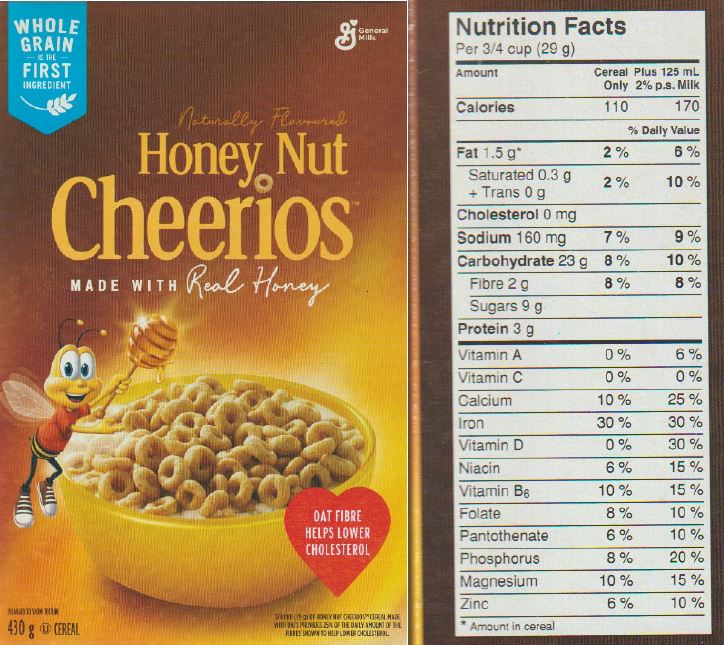
Overweight and obesity are major problems in this country. Children who are overweight become adults. This can cause long-term health problems. As low self-esteem can lead you to eating disorders, excess weight can also affect a child's mental development. The impact obesity has on children's social development is even more alarming. There are many options to help prevent obesity from impacting a child's physical and mental health.
The US has a rising rate of obesity. According to the CDC, nearly 77 million Americans are obese. According to the CDC, this problem is affecting both children as well as adults. The CDC's new initiatives on obesity are working to change communities and promote healthy lifestyle choices. While it's not always easy for people to change their culture, they are making a significant impact. These tips can be used to reduce the obesity epidemic.

Although obesity has many different effects, it can seriously impact your health. Studies have shown that obese people pay $1,429 higher in medical expenses than those who aren’t. Some factors may increase your risk for disease, including diabetes and heart disease. Lack of access to healthy food could also contribute. It is possible that you have difficulty swallowing or chewing your food. You may also be using medication that can increase or decrease the likelihood of you gaining weight. You may also be limited physically and do not have access to a fitness center or gym.
A healthy diet is essential to a healthy lifestyle. The CDC recommends that adults eat a healthy and balanced diet. Limiting their time in front a screen is a good idea. Exercise will be easier for children if they are able to limit screen time. In addition to a healthy diet, exercise is also important for adults. We feel happier and less likely to be obese if we have more energy.
In the United States, obesity rates are increasing. The CDC reported that 42% of Americans were overweight in 2017-2018. These factors include sedentary lifestyles, diet changes, and obesity. For example, a CDC study suggests that a person is obese if they consume too many calories and fattening food and drink too much sugar. The study also points out that chronic disease is not a good thing.

To illustrate the link between obesity and cancer, the CDC created an infographic. Additional resources are available on the CDC website. The CDC has been a leader for many years in public awareness campaigns, but it is also a pioneer in health education. The CDC has issued many reports relating the disease in recent times.
FAQ
How can you tell what is good?
You have to listen to what your body says. When it comes to your body's needs for exercise, food, or rest, it is the best. You need to be aware of your body and not overdo it. You must listen to your body to ensure you are healthy.
What's the difference between a virus & a bacterium?
A virus is an organism microscopic that can't reproduce outside its host cells. A bacterium (or single-celled organism) reproduces by splitting itself into two. Viruses are very small (about 20 nanometers) while bacteria are larger (up to 1 micron).
Viruses can be spread by contact with bodily fluids containing infected substances, such as saliva, urine and semen. Bacteria can easily be spread from direct contact to contaminated surfaces and objects.
Viruses may enter the body through cuts, scrapes. bites, or any other break in the skin. They can also enter the body through the mouth, nose, eyes and ears, vaginal, rectum or anus.
Bacteria may enter our bodies through cuts and scrapes on our skin, burns, insect bites, and other wounds. They can also enter our bodies from food, water, soil, dust, and animals.
Both bacteria and viruses can cause illness. But viruses do not have the ability to multiply within their hosts. They infect only living cells, causing illness.
Bacteria can grow in their hosts and cause disease. They can also invade other parts of your body. They can even invade other parts of the body, which is why antibiotics are necessary to eradicate them.
Why does our weight change with age
How do you determine if your bodyweight is changing?
Weight loss happens when there is less muscle mass and more fat. This means that daily energy needs must be greater than the calories consumed. Low activity levels are the most common cause for weight loss. Others include pregnancy, hormonal imbalances or certain medications. When there is more fat than muscles, it's called weight gain. It occurs when people consume more calories per day than they need. It can be caused by overeating or increased physical activity as well hormonal changes.
We eat less calories than we burn, which is the main reason our bodies lose weight. Regular exercise increases metabolism, which means that we burn more calories per day. This does not necessarily mean that we will get thinner. What is more important is whether or not our body is losing or gaining weight. We will lose weight if we burn more calories than we consume. However, if we consume more calories than we burn, we end up storing them as extra fat.
As we age we tend to be slower in moving and thus we don't move nearly as much. We also tend have less food to eat than when our children were young. We tend to gain weight. On the flipside, we are more muscular than we really need and appear bigger.
If you don't weigh yourself every week, it's impossible to determine how much weight has been lost. There are many options for measuring your weight. You can measure your waist, hips and thighs as well as your arms. Some people prefer to use bathroom scales while others like to use tape measures.
To track your progress, weigh yourself once a week. Measure your waistline once per month. To see how far you have come, you can take photos of yourself every few month.
Online measurements of your height and weight can help you determine your body mass. You'd likely weigh 180 pounds if you were 5'10 tall and 180 pounds if you were 180lbs.
Get immune enhancement with herbs and supplements
To boost immunity function, herbs and natural remedies are available. Examples include ginger, garlic and oregano oils, echinacea, vitamin C, ginkgo loba, and echinacea.
These herbal remedies should not be used in place of conventional medical treatment. Side effects may include nausea, diarrhea, stomach cramps (dizziness), headaches, dizziness and stomach cramps.
What's the problem in BMI?
BMI stands for Body Mass Index, which is a measurement of body fat based on height and weight. The following formula is used to calculate BMI:
Weight in kilograms divided by height in meters squared.
The result can be expressed as a number between zero and 25. Scores between 0 and 25 indicate obesity. A score of 18.5 indicates overweight. A score of 23 indicates obesity.
A person of 100 kg with a height of 1.75m will have 22 BMI.
Is cold a sign of a weak immune response?
According to some, there are two types: people who love winter or those who hate it. It doesn't matter if you love it or not, it is possible to wonder why it makes you feel so miserable when it gets cold outside.
Our bodies were designed to work best in warm climates. Because of this, our bodies evolved to thrive and survive in hot climates.
Now, however, we live in a completely different environment to how our ancestors lived. We spend more time indoors and are often exposed to extreme temperatures (cold or heat) and eat processed foods rather than fresh.
As a result, our bodies aren't used to such extremes anymore. When we do venture out, our bodies are unable to cope with the extremes.
However, there are ways to counter these effects. Staying hydrated is one way to combat this. Drinking plenty of water will help you keep your body hydrated and flush out toxins.
Also, ensure you eat healthy food. Eating nutritious foods helps your body maintain its optimal temperature. This is particularly helpful for anyone who spends long periods of time inside.
Consider taking a few moments each morning to meditate. Meditation helps you relax your mind and body, which makes it easier to deal with stress and illness.
Statistics
- nutrients.[17]X Research sourceWhole grains to try include: 100% whole wheat pasta and bread, brown rice, whole grain oats, farro, millet, quinoa, and barley. (wikihow.com)
- In both adults and children, the intake of free sugars should be reduced to less than 10% of total energy intake. (who.int)
- According to the Physical Activity Guidelines for Americans, we should strive for at least 150 minutes of moderate intensity activity each week (54Trusted Source Smoking, harmful use of drugs, and alcohol abuse can all seriously negatively affect your health. (healthline.com)
- According to the 2020 Dietary Guidelines for Americans, a balanced diet high in fruits and vegetables, lean protein, low-fat dairy and whole grains is needed for optimal energy. (mayoclinichealthsystem.org)
External Links
How To
What does the term "vitamins" mean?
Vitamins are organic compounds that can be found in foods. Vitamins allow us to absorb nutrients from food. Vitamins cannot be produced by the body. They must be acquired from food.
Two types of vitamins exist: water-soluble vitamin and fat-soluble vitamin. Water-soluble vitamins dissolve easily when they are dissolved in water. Some examples include vitamin C,B1 and B2 vitamins (thiamine), B2 and riboflavin, B3 and B6 vitamins (niacin), folic acids, biotin, pantothenic acids, and cholesterol. Fat-soluble vitamins are stored in the liver, fatty tissue and kidneys. Examples include vitamin D, E, K, A, and beta carotene.
Vitamins are classified according to their biological activity. There are eight major vitamin groups:
-
A - vital for healthy growth.
-
C - essential for nerve function and energy generation.
-
D - Essential for healthy teeth and bones.
-
E - Required for good vision & reproduction
-
K - essential for healthy muscles, nerves, and bones.
-
P - vital for building strong bones andteeth.
-
Q - aids digestion, absorption and absorption iron
-
R - Red blood cells are made from red blood cells.
The recommended daily intake (RDA), of vitamins varies with age, gender and physical condition. The U.S. Food and Drug Administration sets RDA values.
For example, the RDA for vitamin A is 400 micrograms per dayfor adults 19 years or older. Pregnant mothers need 600 micrograms per days because it is vital for the development and growth of their baby. Children ages 1-8 require 900 micrograms per day. Infants under one year of age require 700 micrograms per day, but this amount decreases to 500 micrograms per day between 9 months and 12 months of age.
Children between the ages of 1-18 need 800 micrograms per daily for obesity, while children overweight require 1000 micrograms. Children underweight or obese will need 1200 mg per day.
Children 4-8 years old who have anemia must consume 2200 micrograms of Vitamin C daily.
2000 micrograms daily is required for adults over 50 to maintain their general health. Because of their higher nutrient needs, women who are pregnant or nursing need 3000 mg per day.
Adults over 70 require 1500 micrograms each day, since they lose around 10% of their muscle mass every decade.
Women who are pregnant or lactating need more than the RDA. Pregnant women require 4000 micrograms daily during pregnancy, and 2500 micrograms every day after birth. Breastfeeding mothers need 5000 mg per day when breastmilk is being produced.